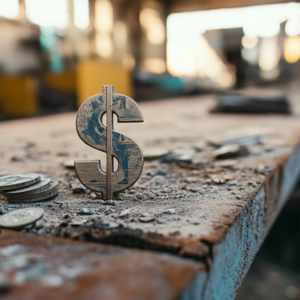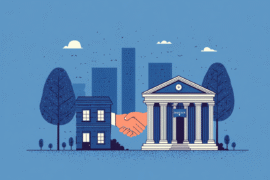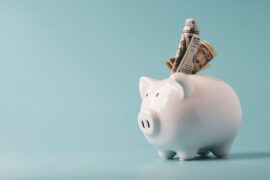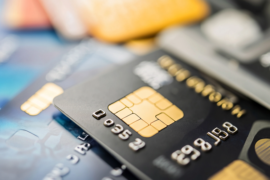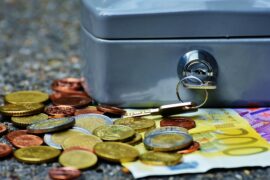This article may contain references to products or services from one or more of our advertisers or partners. We may receive compensation when you click on links to those products or services. Nonetheless, our opinions are our own.
The information presented in this article is accurate to the best of our knowledge at the time of publication. However, information is subject to change, and no guarantees are made about the continued accuracy or completeness of this content after its publication date.
- Quick Look at Certified Checks
- Introduction
- Certified Checks and Their Role in Transactions
- What Is a Certified Check
- How Certified Checks Differ From Regular Checks
- Preparing to Use a Certified Check
- Guide to Getting a Certified Check
- Wrapping Up Certified Check Use
- Frequently Asked Questions
- Recommended Reads
Quick Look at Certified Checks
If you ever thought about how a $10 certified check can keep your home deposit safe, this article is for you. Certified checks play a vital role in financial transactions, especially when renting or buying a home. We’ll explain what certified checks are and how they differ from other types. We’ll also share how to easily request one. By the end, you’ll see how certified checks can protect your deposits and ensure smooth transactions.
Introduction
As more people use digital payments, old methods like certified checks are often overlooked. However, for large buys, such as real estate, a certified check remains a safe option. It keeps both buyers and sellers protected. This guide will help you understand certified checks, how to use them, and how to get one easily.
Certified Checks and Their Role in Transactions
Certified checks are a secure way to pay, especially for large purchases. Unlike regular checks that take money straight from a bank account, a certified check is guaranteed by the bank or credit union that issues it. This means the bank verifies the owner’s signature, ensures there is enough money, and sets aside the required amount. Because of this, the person getting the check can be sure it will clear without any issues from insufficient funds.
A certified check is a promise from the bank. It ensures that the money marked on it is available when you go to cash it. This makes it a more secure option than regular checks.
What Is a Certified Check
A certified check is a safe way to pay. The bank will check if the account holder has enough money. They keep the needed amount aside. This action ensures the check will not fail.
A standard check takes money straight from your account. It depends on the balance you have when you deposit it. When you ask for a certified check, the bank checks your identity. It makes sure you have the money and keeps that amount safe. This extra step makes certified checks a good choice for large transactions.
Voted "Best Overall Budgeting App" by Forbes and WSJ
Monarch Money helps you budget, track spending, set goals, and plan your financial future—all in one app.
Get 50% OFF your first year with code MONARCHVIP
How Certified Checks Differ From Regular Checks
Knowing how certified checks and regular checks are different is important for handling money. Regular checks, often called personal checks, take money from a person’s account. They work well for everyday expenses. But certified checks offer more security than regular checks.
The main point is the bank’s guarantee. A certified check means the bank verifies the money of the account holder and their signature before issuing the check. This feature lowers the risk of not having enough funds, making it safer for the person who gets it. For large payments, like real estate deposits, certified checks offer peace of mind by ensuring the payment will be accepted.
Preparing to Use a Certified Check
Before you ask for a certified check, you should find out what the bank needs. It is important to gather the correct documents. This will help make the process smoother.
Necessary Documentation and Identification
To get a certified check, you must show a valid ID. A government ID with your picture, like a driver’s license, passport, or state ID, is required. Make sure your ID is correct and matches the details on your bank account.
Your bank or credit union may request extra documents. The documents may include your Social Security number or recent bank statements. It all depends on their rules and the check amount. It’s smart to call your bank first to find out what they need.
You will need to provide the correct details about the person getting the money. Please ensure their legal name is correct. This step will help avoid any delays or issues with processing the check.
When Certified Checks May Be Requested
Certified checks aren’t required for every deal. Still, they can be very useful for big purchases and when you are dealing with people you don’t know well.
A common thing people do is buy or sell real estate. In these cases, certified checks are often required for money deposits or closing costs. They are also useful for large purchases like cars or expensive items from private sellers. A certified check assures the seller that the payment is secure. This process helps reduce the risk of fraud or bad checks.
If you have any uncertainty regarding a certified check, please feel free to inquire with the person or business you are paying. They may want it for added safety and trust.
Guide to Getting a Certified Check
Getting a certified check is easy. It usually involves visiting your bank or credit union. Here’s a simple step-by-step guide:
Step 1: Visit your bank or financial institution
Start by visiting your bank, a local branch of a large bank, or your credit union. First, ask if they provide certified checks. Some banks only offer cashier’s checks. While these are similar, they have some differences.
Upon your arrival, inform the teller that you require a certified check. They will assist you with the process. This process usually involves completing a request form and showing your ID.
Step 2: Request and fill out a certified check form
The request form needs the following details:
- Your full name and address
- Your account number
- Your phone number
- The full name of the person or organization getting the check
- The amount of the check (shown with numbers and written out in words)
- A memo line (optional, to show why you are making the payment, like “Rent Payment” or “Down Payment”)
Please review the information thoroughly to confirm its accuracy. Mistakes can delay processing. Write clearly to avoid any confusion.
Step 3: Verify funds and complete certification
After you send the form, the bank will check if you have enough money in your account. They will hold the check amount until they verify this. This procedure keeps you from using that money for other things.
The bank worker will complete the process by placing an official “certified” stamp on the check. They will also note the transaction details. You may need to sign the check as well.
Before you go from the bank, look at the certified check closely to be certain it is correct. Please ensure it is placed in a secure location until it is provided to the intended recipient.
Wrapping Up Certified Check Use
Certified checks are a secure way to pay for large purchases. They offer safety and help stop fraud. When you learn how to get a certified check, you can handle important money tasks more easily. Please visit your bank, complete the necessary form, and ensure the funds are available to obtain a certified check smoothly.
Frequently Asked Questions
What do certified checks cost?
The cost of a certified check varies from bank to bank. Most banks and credit unions charge between $10 and $20. It is a good idea to ask your bank what their exact fees are.
How long does it take for a certified check to clear?
A certified check usually takes one business day to go through. Occasionally it can take longer. It depends on the bank and how they process checks. If you need it fast, ask your bank for details.
Can a certified check be canceled?
Canceling a certified check is more difficult than canceling a personal check. You have to call the bank that gave it to you. Thereafter, you need to show your ID and request to cancel it officially. Some banks may need more forms, and getting approval isn’t guaranteed.
How is a certified check different from a cashier’s check?
A certified check is drawn from your account and certified by your bank. A cashier’s check, however, is drawn from the bank’s own account after they take funds from you. Both are secure, but a cashier’s check may be more commonly accepted in some cases.

Reviewed and edited by Albert Fang.
See a typo or want to suggest an edit/revision to the content? Use the contact us form to provide feedback.
At FangWallet, we value editorial integrity and open collaboration in curating quality content for readers to enjoy. Much appreciated for the assist.
Did you like our article and find it insightful? We encourage sharing the article link with family and friends to benefit as well - better yet, sharing on social media. Thank you for the support! 🍉
Article Title: Certified Checks: How They Work and When to Use Them
https://fangwallet.com/2025/08/04/certified-checks-how-they-work-and-when-to-use-them/The FangWallet Promise
FangWallet is an editorially independent resource - founded on breaking down challenging financial concepts for anyone to understand since 2014. While we adhere to editorial integrity, note that this post may contain references to products from our partners.
The FangWallet promise is always to have your best interest in mind and be transparent and honest about the financial picture.
Become an Insider

Subscribe to get a free daily budget planner printable to help get your money on track!
Make passive money the right way. No spam.
Editorial Disclaimer: The editorial content on this page is not provided by any of the companies mentioned. The opinions expressed here are the author's alone.
The content of this website is for informational purposes only and does not represent investment advice, or an offer or solicitation to buy or sell any security, investment, or product. Investors are encouraged to do their own due diligence, and, if necessary, consult professional advising before making any investment decisions. Investing involves a high degree of risk, and financial losses may occur including the potential loss of principal.
Source Citation References:
+ Inspo
There are no additional citations or references to note for this article at this time.


